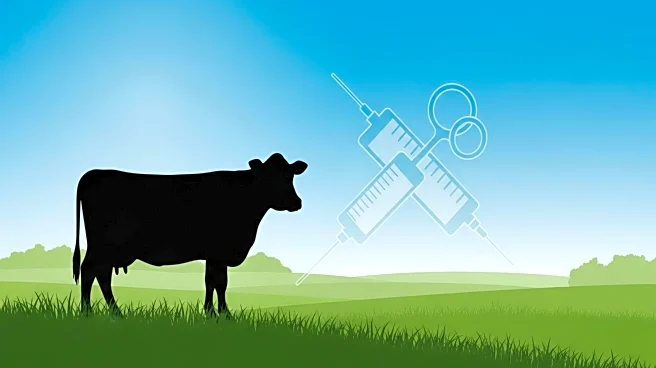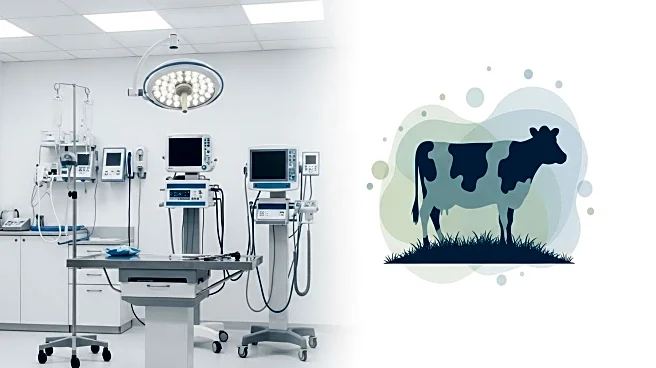What's Happening?
At the 2025 World Dairy Expo, Boehringer Ingelheim veterinarian Jen Roberts discussed advancements in mastitis treatment for dairy cows, emphasizing the importance of distinguishing between infection and inflammation. Roberts highlighted the benefits of using targeted, shorter-duration antibiotic treatments for Gram-positive mastitis cases, which can reduce antibiotic use by two-thirds. This approach involves culturing each case of mastitis to identify the presence of pathogens and guide treatment decisions. The strategy aims to improve animal welfare and reduce costs associated with milk discard, which is a significant expense for dairy producers.
Why It's Important?
The shift towards shorter, targeted antibiotic treatments for mastitis in dairy cows is significant for both the dairy industry and public health. By reducing antibiotic use, the industry can address concerns about antibiotic resistance, a major public health issue. Additionally, this approach can enhance consumer confidence in dairy products by demonstrating responsible antibiotic stewardship. Economically, reducing the duration of antibiotic treatments can decrease the cost of milk discard, benefiting dairy farmers financially. This development aligns with broader efforts to ensure sustainable and ethical practices in agriculture.
What's Next?
The adoption of these protocols requires farms to consistently collect and send samples for culture, which may pose logistical challenges. However, on-farm culture methods are becoming more accessible, allowing farmers to identify Gram-positive, Gram-negative, and no-growth cases efficiently. As these practices become more widespread, they could lead to industry-wide changes in mastitis management, potentially influencing regulatory standards and consumer expectations. Continued research and education on mastitis treatment will be crucial in supporting these advancements.
Beyond the Headlines
The move towards more judicious antibiotic use in dairy farming reflects a broader trend in agriculture towards sustainability and transparency. This shift may influence other sectors to adopt similar practices, promoting a more responsible approach to animal health and food production. The ethical implications of reducing antibiotic use also resonate with consumer demands for environmentally friendly and health-conscious products.











